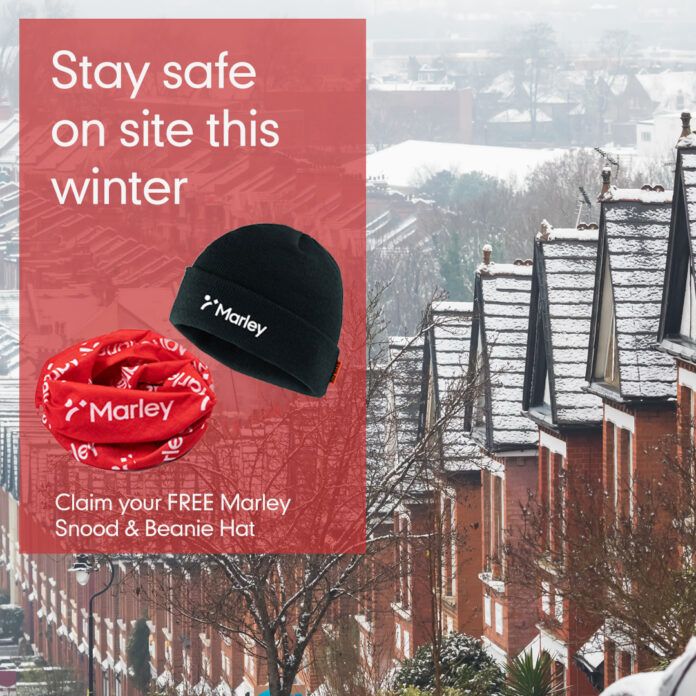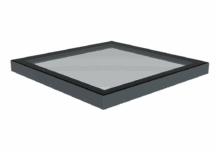Marley has launched its ‘Winter Safety’ campaign to provide professional roofers with advice and support on how to stay safe on site when it’s cold, wet and windy.
Be alert
Construction sites are hazardous environments, with heavy machinery and power tools in constant use and of course, people working at height.
Winter has the potential to get nasty, with temperatures plummeting to below zero, heavy and persistent rain plus strong winds to contend with. For roofers, who are highly exposed on site anyway, winter can have a significant negative impact on their health, safety and wellbeing.
Daniel Redfern, marketing manager at Marley said: “Onsite health and safety is a top priority for Marley, with the winter months requiring very specific advice. That’s why we’re committed to providing useful, straight-forward information, highlighting the risks and showing how to minimise them.”
Be aware
Preparation is vital for a safe and successfully operational site, with key areas to consider:
- Watch the weather
Make sure that the weather forecast is monitored daily so that any poor weather is anticipated and action, if required, is taken. Essential for roofers, working at height platforms and roofs should be regularly checked for ice. If ice is present, work should cease immediately as this is a requirement of the Working at Height Regulations 2005.
- Keep the heat in
Lower temperatures mean that additional clothing is essential to help counter the impact of cold on the body. Rapid heat loss or reduction in body temperature over time can lead to serious illness and downtime.
Wear least three layers of clothing – a base layer with moisture-wicking properties to draw sweat away from the body; a middle, breathable layer to help insulate and a good wind/waterproof outer layer, that fits well, allows for a full range of movement and gives good elemental protection.
Wet clothing should be changed immediately, whilst gloves should be worn at all times, especially when using ladders or scaffolding as frostbite can occur immediately if extremely cold metal is touched with bare hands.
Finally, it is essential that hot food and drinks are consumed throughout the day to help keep the body’s core temperature at a healthy level.
- Avoid slips, trip and falls
When a surface, such as a scaffolding platform or roof becomes cold, ice can form and present a major slipping hazard, with height only adding to the danger. Such areas need to be treated to avoid slips, trips and falls.
Clearing icy patched with salt or sand improves traction and should be applied when and where needed, whilst extra care should be taken when carrying tools and materials.




